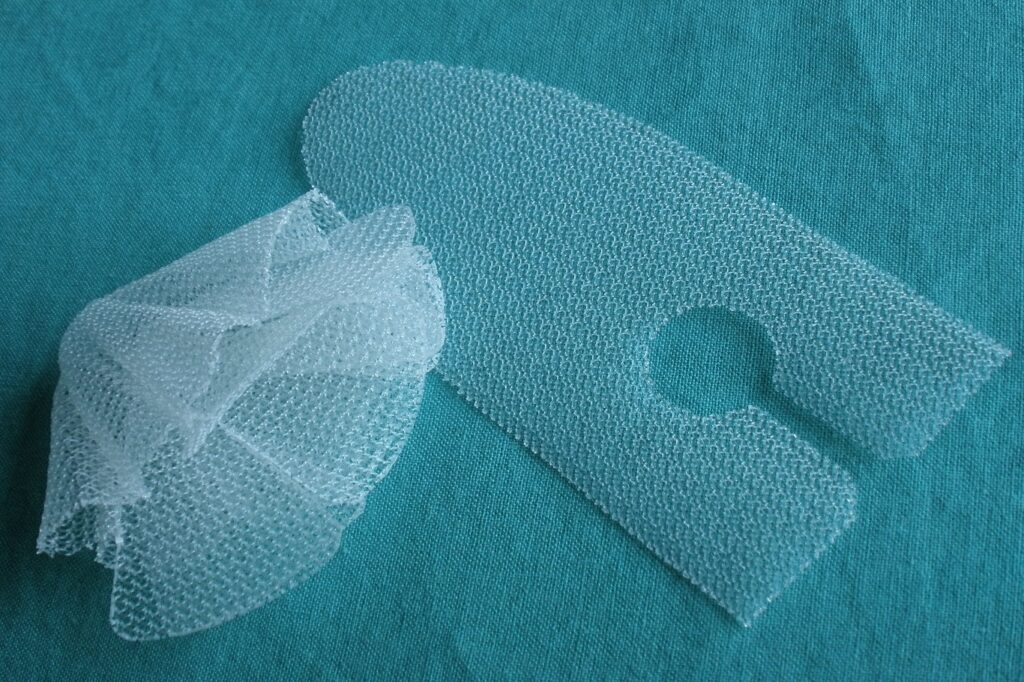A hernia can be caused due to many reasons, mainly by a combination of muscle weakness and pressure that pushes a tissue or an organ through an opening. The abdominal cavity is where hernias occur the most. (Hernia Mesh)
In order to fix a hernia, many people resort to surgeries. However, a repair surgery has often been linked to the reoccurrence of hernia and this is why the use of hernia mesh is recommended. It has been discovered that using hernia mesh may hinder the chances of hernias returning.
In case your hernia mesh procedure goes wrong, you can reach out to hernia mesh lawyers. What we basically mean to say is that the use of hernia mesh has become widespread and you can approach it from several different directions be it the legal one or the one that informs you about its applications.
In this article, we will take a look at the types of hernia mesh.
Types of Hernia Mesh
There are two main categories of mesh i.e. Synthetic & Bioprosthetic. These two categories are then divided into additional subcategories.
Synthetic
An ideal synthetic mesh must boast a number of properties. Not only should it be chemically inert but it must also be resistant to mechanical stress, along with being non-carcinogenic and sterilizable. It’s also preferred if it generates a minimal inflammatory response.
A synthetic mesh can be:
1) Reticular: Touted as macroporous for boasting pores of up to 4 mm, reticular meshes are mainly made of polypropylene (PP). It’s also possible for polyester and polytetrafluoroethylene to be the materials behind this mesh’s composition.
When it comes to the PP mesh, it has been proven to be quite strong under tension in order to offer a stable mechanical reinforcement. However, there are certain downsides associated with PP meshes. For starters, upon coming in contact with viscera, adhesion formation initiates. Moreover, it has been linked with lesser pliability and more pain.
As for the polyester mesh, even though it hasn’t achieved much popularity yet, its use has yielded many positive results so far. These meshes aid in fixing the surrounding tissues as well. Also, in comparison to the PP mesh, a polyester mesh results in less shrinkage over time. However, its uses have been linked with the infection rate going up.
2) Laminar: If you are not interested in using reticular meshes, you can resort to Laminar meshes. They are generally composed of expanded polytetrafluoroethylene (PTFEe). Unlike reticular meshes, the laminar ones are microporous. The material used in the mesh boasts decent biological tolerance.
Additionally, this mesh type generates satisfactory neoperitoneum. The discussed reasons, along with some others, make laminar a suitable alternative to reticular meshes.
But since nothing in this world is perfect, there are a few disadvantages of using laminar meshes. The main one is that ideal tissue incorporation is absent in this mesh type. What this means is that in this type of mesh, the connective tissue encapsulates the mesh rather than infiltrating it. And this can become the reason behind the hernias returning.
3) Composite: Composite meshes have been introduced to bring you the best of reticular and laminar meshes. So, of course, their composition isn’t straightforward. A composite mesh is made by blending PP and PTFE. The surface of the non-visceral side of the mesh is macroporous, resulting in good mechanical strength. Moreover, the surface of the internal layer/visceral side is microporous, preventing adhesion as a result.
Composite meshes are effective in fixing large hernia defects in instances when the abdominal wall has to be completely reconstructed.
Bioprosthetic
While synthetic meshes’ applications cannot be denied, nothing beats biological stuff. The main motive behind the formation of Bioprosthetic meshes is to offer extracellular bits in order to finish the healing process. Only after healing will healthy tissue be reformed. This should also reinstate functional integrity to the abdominal cavity.
The advantages offered by Bioprosthetic meshes are unrivaled. From prompting an unnoticeable immune reaction to hindering fibrosis, there are quite many reasons why these meshes should be your go-to. However, their excessive manufacturing cost, coupled with nerfed mechanical strength, can be the factors that end up turning away people.
Currently, there are various types of Bioprosthetic meshes ready to be sold and used. They can be segregated based on a number of factors such as tissues (animal or human), tissue type (dermis, intestinal, pericardium, or submucosa), as well as the processing tactics (cross-linking or stripping).
Before You Go…
It goes without saying that the use of mesh to repair hernias is growing in scope by the day. Meshes do a better job of ensuring that hernias don’t return (compared to hernia surgeries). However, before you are ready to receive a mesh implant, it’s important that you schedule a consultation session with the medical personnel responsible for your treatment. This will allow you to learn about different mesh types, as well as, the advantages and disadvantages associated with each.
(Go to Fictionistic)

